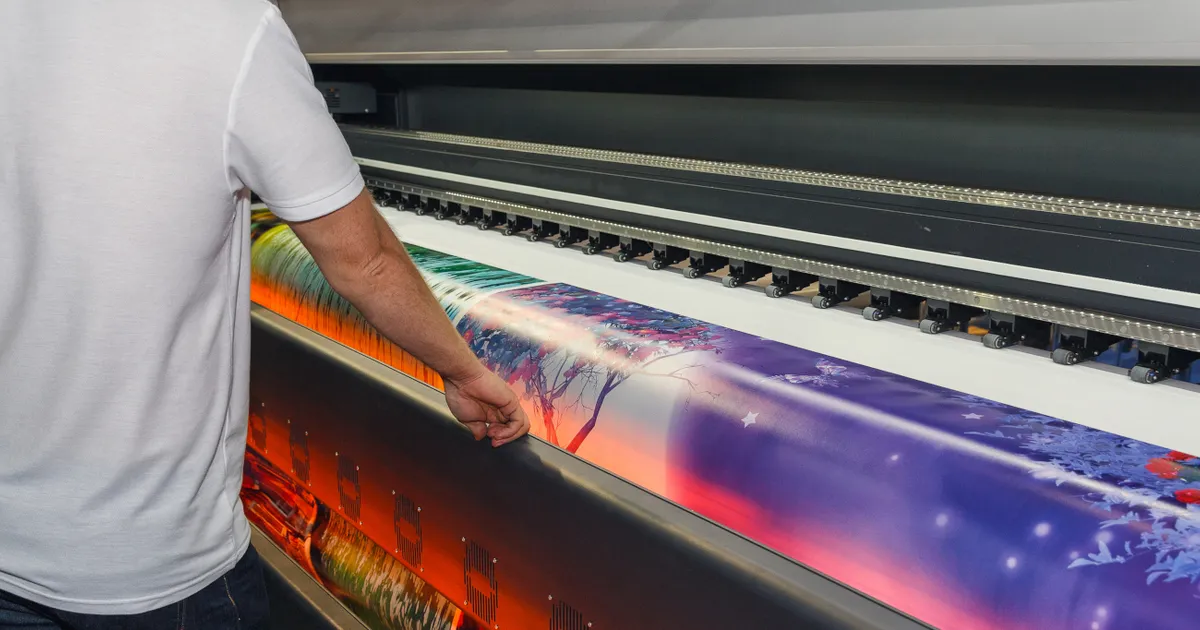In the competitive field of manufacturing, finding new technologies is crucial for staying ahead – and inkjet printing systems are among these vital tools. For those in manufacturing, adopting this technology is a game-changer, offering ways to increase work output, cut down on costs, and ensure adherence to the constantly changing industry rules. Fortunately, if you start a search right now, you can learn everything you need to know about investing in an inkjet printing system.
 Shutterstock: DmyTo
Shutterstock: DmyToWhat is an Inkjet Printing System?
An inkjet printing system is a versatile tool known for its efficiency in creating labels and marks in various industries, including manufacturing and aerospace. There are different types of inkjet labeling systems, such as: 1
- Continuous Inkjet (CIJ) for coding on bottles and cans
- Drop on Demand (DOD) for larger, bolder prints
- Thermal Inkjet (TIJ) for high-resolution prints on cartons and packaging
Each type caters to distinct needs, offering solutions that range from detailed and intricate labeling to bold and large-scale marking. The adaptability and variety in inkjet systems allow businesses to select a system that best aligns with their operational requirements and desired outcomes.
Enhanced Productivity
One notable benefit of manufacturers investing in an inkjet marking system is the remarkable enhancement in productivity. These systems operate at high speeds, allowing swift marking of products, which is crucial for maintaining a steady workflow.
The quick-drying ink also means that there’s no need to pause production lines, reducing delays. This efficiency in operations enables manufacturers to meet their production targets with greater ease.
Cost-Efficiency
Another advantage is the cost-efficiency inkjet marking systems bring to the manufacturing process. Starting at around $350 per unit, these systems generally have a lower acquisition cost compared to other marking technologies, making them an economically viable option. 2
The maintenance and operational costs are also relatively low, enabling manufacturers to allocate resources to other crucial aspects of the production line, optimizing overall operational costs.
Adaptability to Various Surfaces
Inkjet marking systems also offer remarkable adaptability, proving beneficial for manufacturers dealing with a range of materials and surfaces.
These systems can effectively mark on plastic, metal, glass, and more, providing versatility in application. This ability to adapt is crucial for manufacturers looking to diversify their product lines, allowing them to mark different products without the need for multiple marking systems.
Improved Compliance and Traceability
The precise and reliable marking provided by inkjet marking systems aids manufacturers in maintaining compliance with industry standards and regulations. Ensuring traceability, the systems can seamlessly incorporate essential data on products, such as:
- Manufacturer dates
- Expiration dates
- Batch numbers
- Barcodes
This aspect is vital in avoiding legal complications and ensuring the products manufactured are consistent with quality standards, safeguarding the company’s reputation.
Sustainability and Reduced Waste
Lastly, inkjet marking systems align with the growing emphasis on sustainability and environmental consciousness in manufacturing. They often utilize eco-friendly inks and operate with energy efficiency, reducing the environmental impact.
Additionally, the accuracy of inkjet marking minimizes waste due to errors, contributing to more sustainable manufacturing processes and enabling companies to uphold their commitment to environmental responsibility.
How do Inkjet Marking Systems Compare With Laser Marking Systems?
Inkjet and laser marking systems are both high-tech options used for adding marks and labels in manufacturing, but they have some differences. Inkjet marking systems are versatile and work well for different surfaces and materials. Plus, they are easier to set up, making them a good choice for various industries.
On the other hand, laser marking systems are known for their precision and durability. They create permanent marks that can withstand harsh conditions, which is essential in some manufacturing settings. While both offer high-speed marking solutions, laser marking systems typically cost thousands of dollars more – at least upfront – which might be out of range for some manufacturers. 3
Selecting the Right Inkjet Printing System
The variety of inkjet printing systems available necessitates careful consideration to select the most suitable one. Evaluating the specific needs of your manufacturing processes, including the type of products and the materials used, is crucial in making an informed decision.
It’s also essential to assess the system’s integration capabilities with the existing production line to avoid potential compatibility issues. Finally, reviewing the system’s maintenance needs and operational costs is vital to ensure its sustainability and cost-effectiveness in the long run.
The Future Looks Bright for Inkjet Printing Systems
The trajectory of inkjet marking systems in manufacturing labels and packaging seems poised for continued evolution and adoption. 4 With advancements in technology, inkjet marking systems are anticipated to become more refined, offering even greater precision and adaptability to varied manufacturing needs.
With additional online research, you can explore a range of applications that inkjet printing systems are capable of handling. Overall, their role in ensuring compliance, traceability, and sustainability makes them indispensable to manufacturers as they adapt to the ever-evolving demands of the industry.